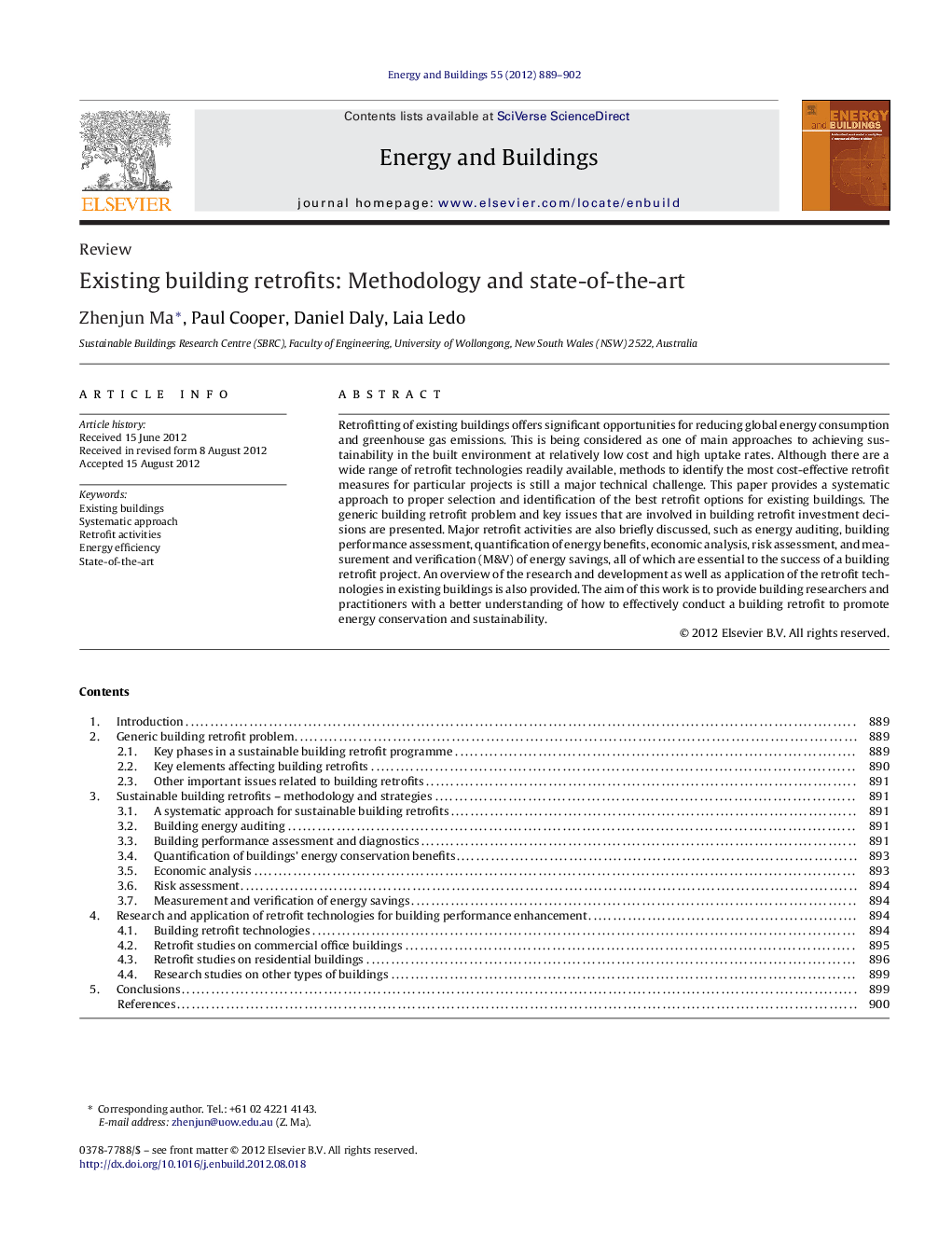| Article ID | Journal | Published Year | Pages | File Type |
|---|---|---|---|---|
| 263897 | Energy and Buildings | 2012 | 14 Pages |
Retrofitting of existing buildings offers significant opportunities for reducing global energy consumption and greenhouse gas emissions. This is being considered as one of main approaches to achieving sustainability in the built environment at relatively low cost and high uptake rates. Although there are a wide range of retrofit technologies readily available, methods to identify the most cost-effective retrofit measures for particular projects is still a major technical challenge. This paper provides a systematic approach to proper selection and identification of the best retrofit options for existing buildings. The generic building retrofit problem and key issues that are involved in building retrofit investment decisions are presented. Major retrofit activities are also briefly discussed, such as energy auditing, building performance assessment, quantification of energy benefits, economic analysis, risk assessment, and measurement and verification (M&V) of energy savings, all of which are essential to the success of a building retrofit project. An overview of the research and development as well as application of the retrofit technologies in existing buildings is also provided. The aim of this work is to provide building researchers and practitioners with a better understanding of how to effectively conduct a building retrofit to promote energy conservation and sustainability.
► A systematic approach to proper selection of the best retrofit options is proposed. ► The generic building retrofit problem is presented. ► Key issues involved in building retrofit investment decisions are discussed. ► We review the previous studies on existing building retrofits.
